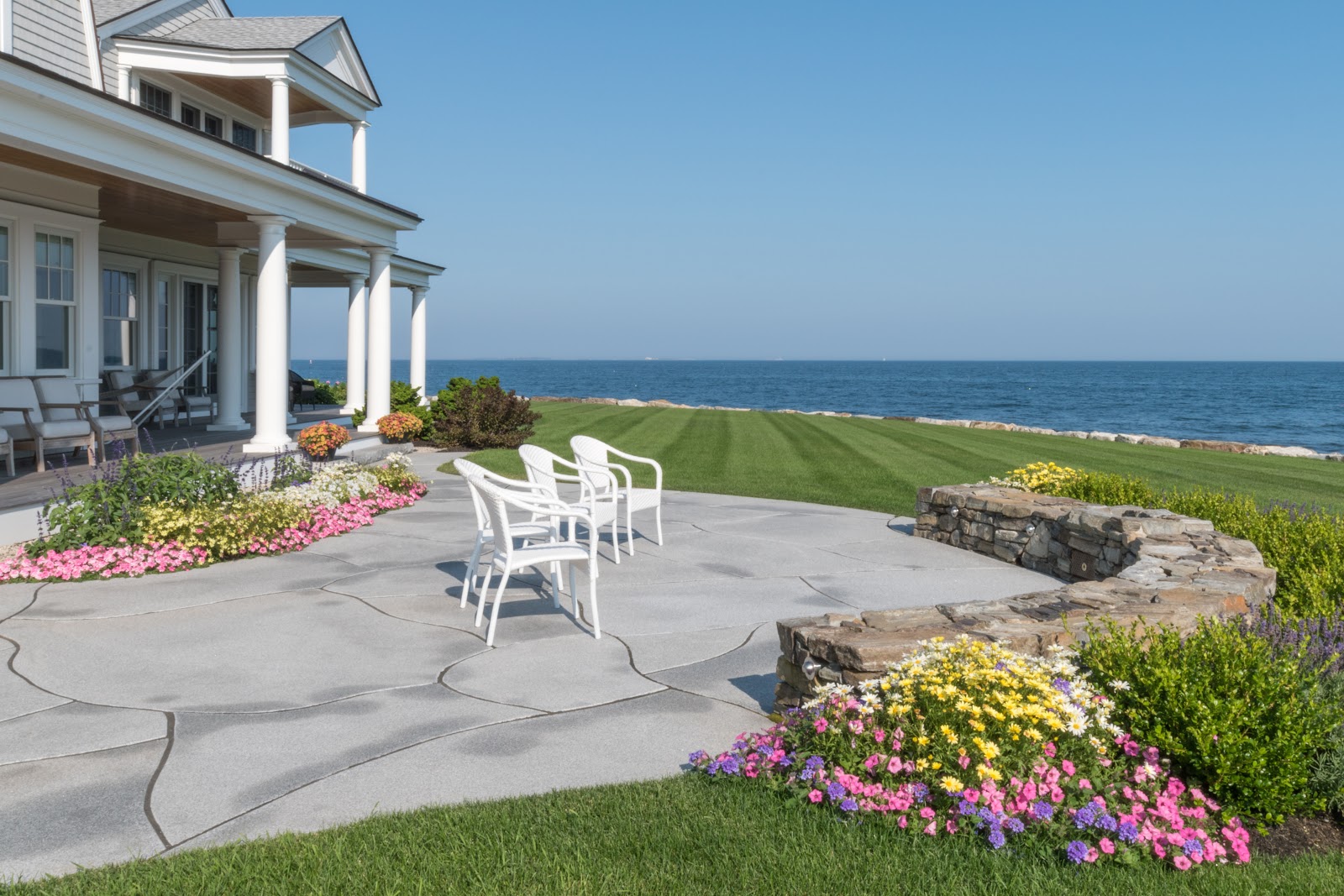6 Ways to Create a More Sustainable Garden in New England

The fall season — with its cooler air and summer-warmed soil — is the perfect time for planting a garden in New England. If you are busy in the planning stages, consider adding elements to increase it’s sustainability by making it a little more earth friendly.
We’ve put together a few ideas for creating a sustainable garden that not only helps support the local ecosystem, but also avoids using toxic chemicals.
Let your hardscape go au naturel
For a classic New England garden, nothing could be more appropriate than natural stone. Consider incorporating granite steps, patio pavers and stone walls into your hardscape design. Natural stone and granite are so versatile and accommodate all sorts of applications and design styles.
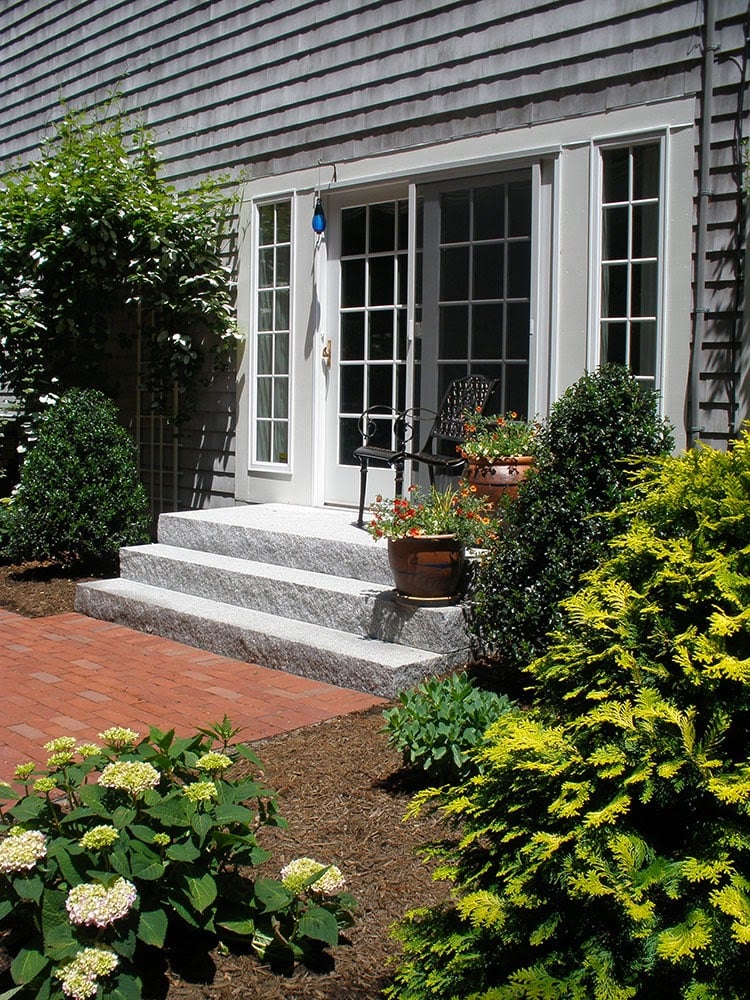
This New England home balances hardscape and softscape with native plants and WOODBURY GRAY™granite steps.

Project by Great Works Landscape
This Rye, NH house features custom cut Woodbury Gray granite pavers in its oceanside patio, as well as a wall made from Old New England fieldstone. A colorful array of flowers adds texture and softness to a Woodbury Gray granite patio. Pinks, purples, and yellows are complementary colors in this landscape.
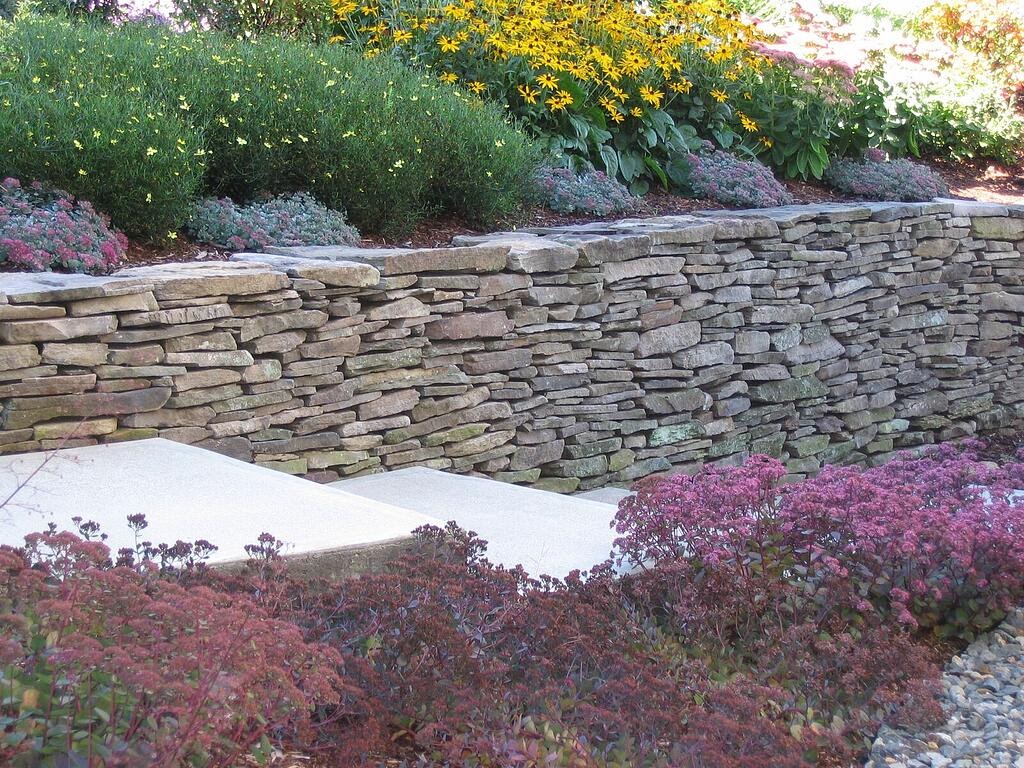
This Thin Weathered Fieldstone retaining wall holds back the planting bed from the steps while giving definition to the walkway and planting bed.
Natural stone is much more sustainable than any man-made product — it’s the original organic building material. Natural stone requires no chemicals for production, takes less water to process, doesn’t release VOCs and lasts a lifetime. And projects that use natural stone are virtually maintenance free.
Choosing locally sourced products to minimize the impact your hardscape has on the environment is another consideration to keep in mind. Neil Best, owner of Magma Design Group, a boutique landscape architecture and construction firm, points out the environmental impact of quarrying and shipping stone from places like China and India vs. stone that’s quarried in our backyard. Another deterrent are the safety shortcuts quarries in other countries take to keep costs low. You may save a few cents per square foot, but at what cost to the environment?
“It’s awesome to know that our dollars are put into these businesses that are American made, right here in New England, supporting the men and women who are working there,” says Best.
You may also want to consider edging your garden or driveway with natural stone. Granite edging can add visual interest to your front yard as a decorative border around driveways and walkways, and also function as a root barrier between plants or grasses and the hardscape. Granite edging can also be used around a garden or planter bed to accentuate natural features.
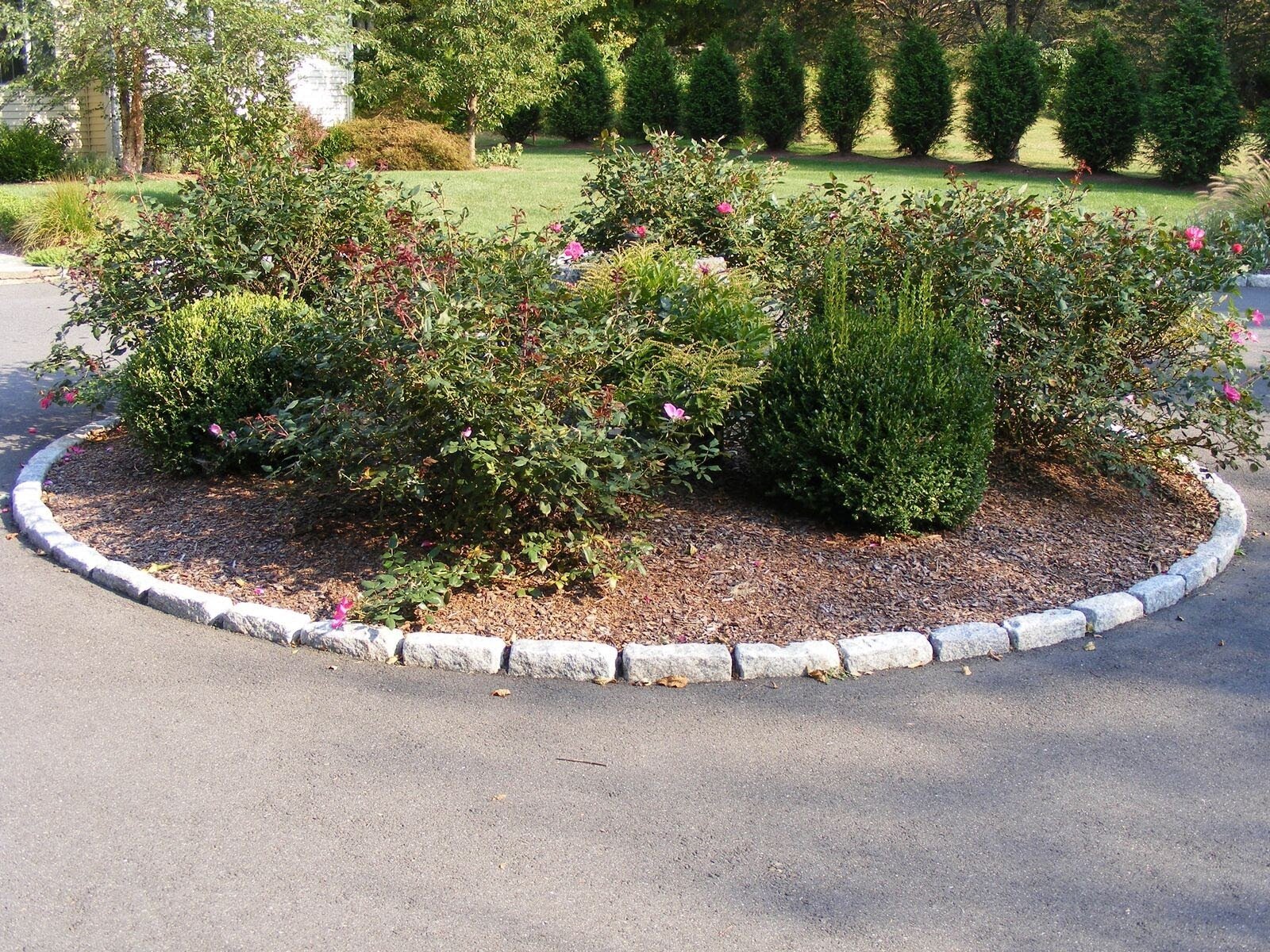
Standard granite cobblestones edge the planter bed in the center of a driveway.
DOWNLOAD THE CURBING AND EDGING INSPIRATION GUIDE HERE
Be a picky planter
When choosing what to plant in a sustainable garden, consider plants that don’t require much upkeep. Rhododendrons, for example, can become overgrown and require frequent maintenance and removal. Alternatively, dwarf varieties of these plants can bring color and texture to gardens without becoming overgrown.
Flowers that come back year after year — known as perennials — are another excellent low maintenance option. Homeowners should consult with landscape professionals to determine the best options for their garden.
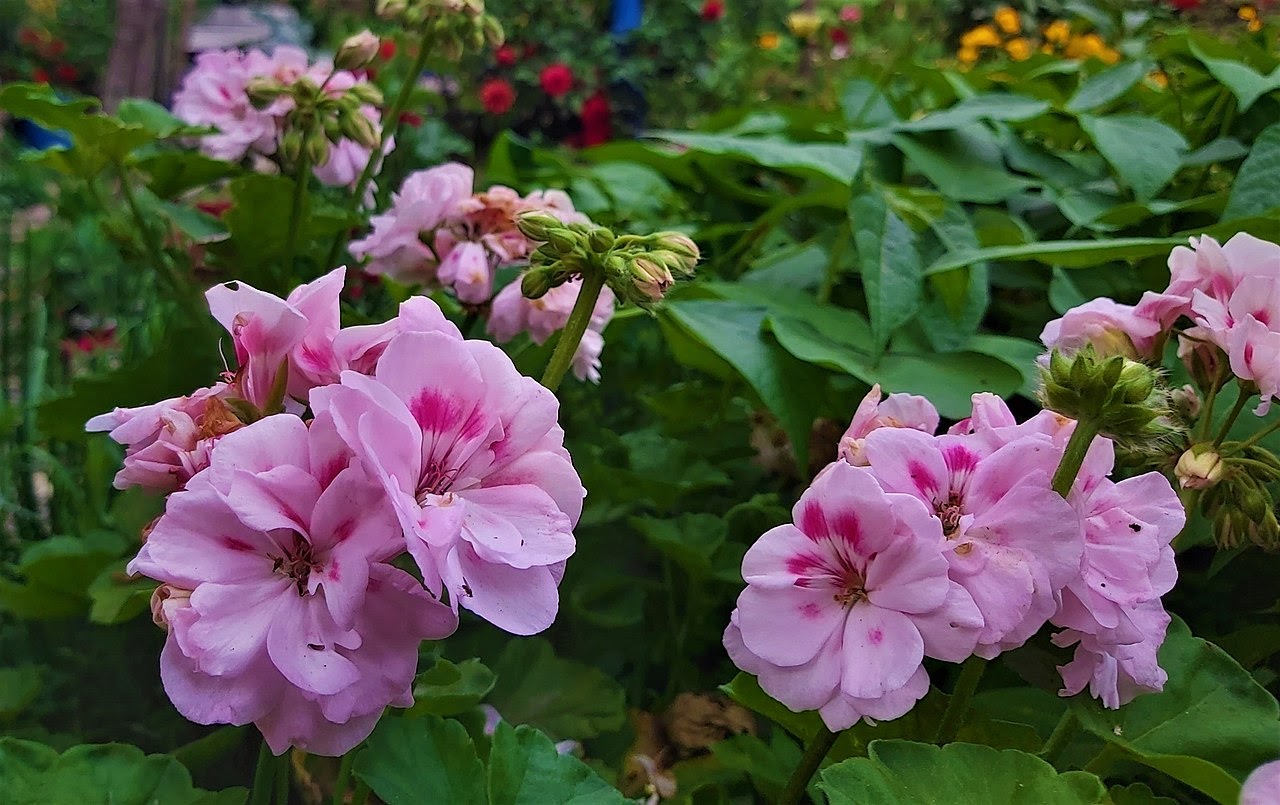
Photo credit: Wikipedia
Wild pink geranium is native to much of eastern North America.
“People are also incorporating plants that they don’t need to take care of,” says David Ahronian, MCH, Vice President of Marketing Communication and Designer at Ahronian Landscaping and Design in Holliston, MA. “They still want color, but would prefer if they didn’t have to put so much work into the garden.”
According to Andy Grondalski, Nursery Manager at Sixteen Acres Garden Center in Springfield, MA, trees and shrubs are a great low-maintenance option for homeowners who want to add visual interest without needing to water or fertilize regularly.
Maple tree varieties, like the Japanese Maple and Sugar Maple, are widely known for their fiery orange and red autumn leaves. Other trees to plant in the fall include alder, crabapple, sycamore and spruce. Bushes like sumac and fothergilla are popular seasonal favorites as well.
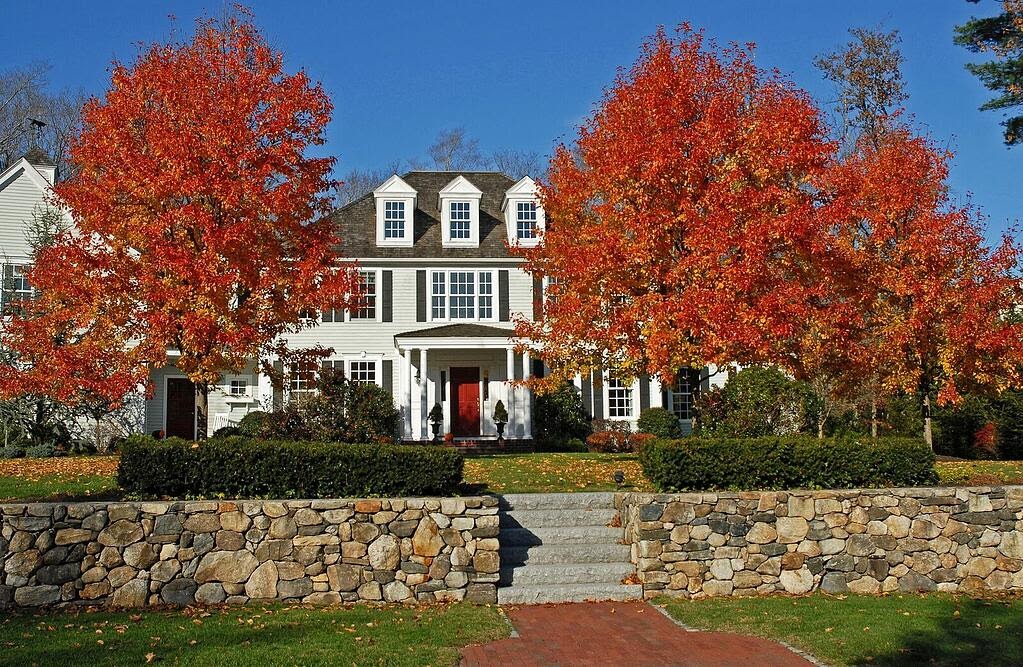
Project by Seoane Landscape Design
Maple trees, Woodbury Gray granite steps and New England Style wallstone add color and curb appeal to this colonial home.
Know where you live
Just because a plant or shrub looks great online or in your favorite gardening magazine doesn’t mean it will thrive in your garden if it’s not zoned for your part of the country. Seasons and climate should be major considerations when designing a garden sustainably. Plants that are indigenous to your region are not only more likely to flourish in your garden, but require less maintenance and also attract native insect and bird populations.
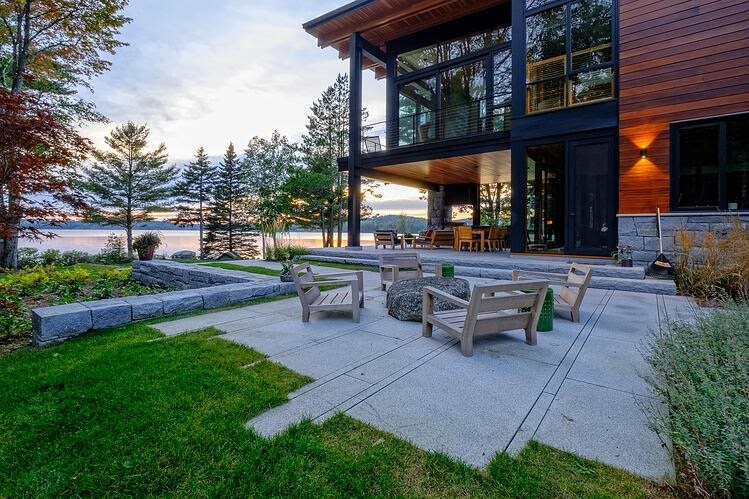
Photo credit: Jeff Sinon Photography
Catmint (Nepata) softens the edges of the Woodbury Gray granite patio of this Lake Sunapee home. Project by Pellettieri Associates, Inc.
Another factor to consider: climate can determine the balance between hardscape and softscape elements. For example, in regions with a short growing season, more hardscape features should be used, while in lush areas, more plants can be utilized.
Turn it upside down
There’s no better treat you can give your garden than the addition of compost, which helps to enrich the soil by acting as a natural fertilizer. When you recycle your organic material, you reduce the need for synthetic fertilizers while retaining moisture and cutting down the need for watering.
Getting started composting is super simple: just save all the organic matter from your kitchen (except meat) in a composting bin. Add leaves and grass clippings and let it cure for a few weeks until it looks dark and crumbly. Then, you can begin adding it to your garden.
“Compost provides critical organic matter for soil texture and food for soil organisms,” landscape designer Patricia Larenas of Urban Artichoke Fine Gardening tells Houzz.
Tuck your plants in (with mulch)
Not only does mulch look nice and prevent weeds from cropping up in your garden beds, it also helps protect your plants’ roots and improve soil drainage. Mulching in the fall helps keep plants from shifting during winter’s freeze thaw cycles. In sustainable gardening, the only type of mulch that should be used is one that is biodegradable and will become one with the soil over time.
The trick to mulching is to only add about a 2-3 inch layer on top of the soil and avoid the dreaded “mulch volcano,” which could end up damaging a plant or tree. There are many great options for mulch, including shredded bark, cocoa bean hulls, pine needles, grass clippings and coir (made from coconut hulls).
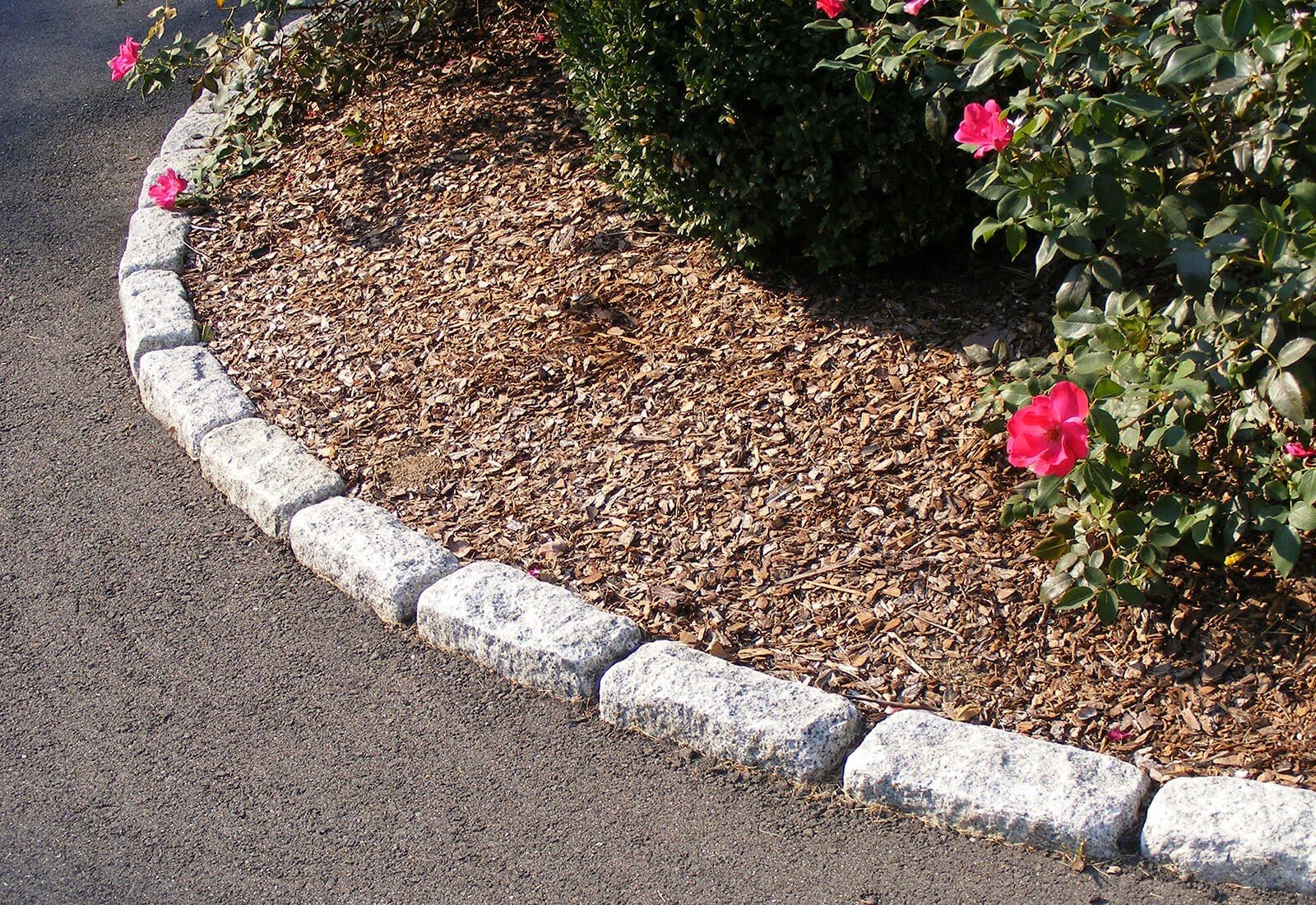
Shredded bark mulch tucks in the plants. Standard granite cobblestones edge the planter bed.
Conserve and recycle water
Landscape designers suggest grouping plantings by watering needs in an effort to conserve water. Collecting rainwater in barrels is a great method for limiting the amount of watering your garden requires by using what Mother Nature sends your way. Pro tip: make sure you check local laws before purchasing and installing your rain barrel; some states have issued rainwater harvesting restrictions.
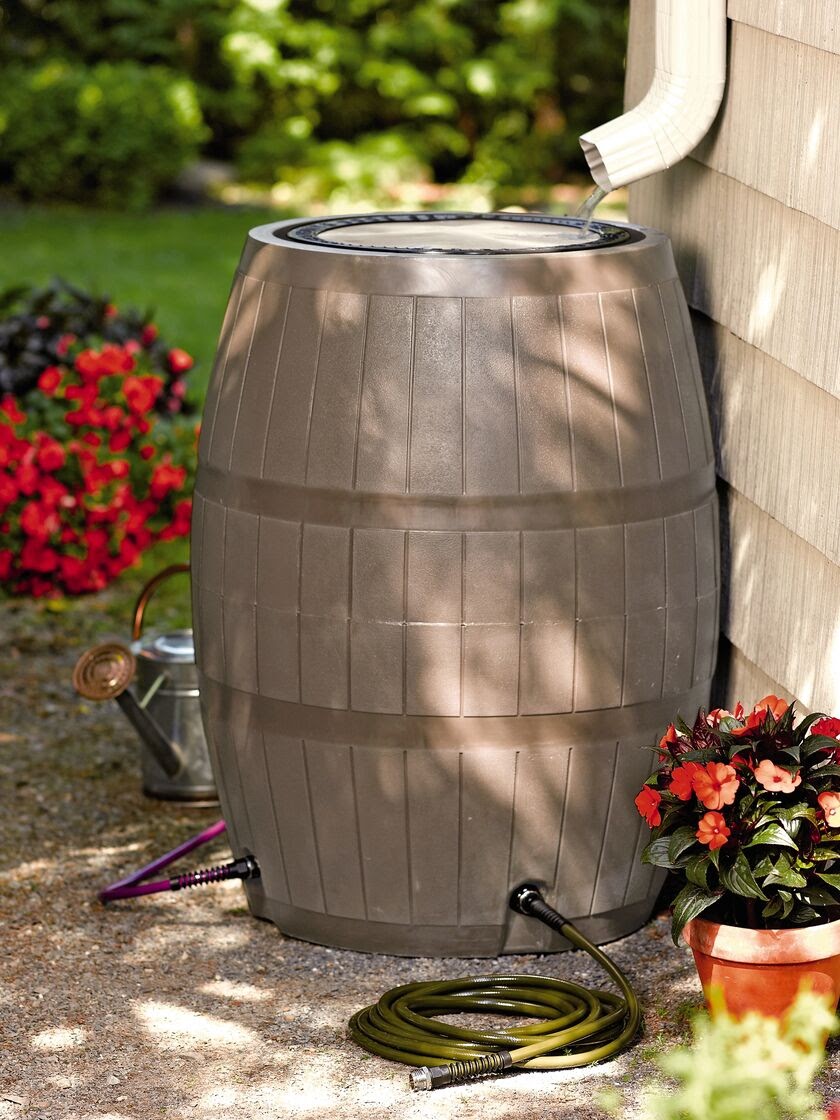
Homeowners can also design and plant their gardens in a way that conserves water. One way is by choosing low water plants, like Star of Madeira that flaunts a majestic spiked purple flower in the spring, or a vibrant butterfly bush that will also add hummingbirds and a variety of butterflies to your garden.
There are so many fresh ideas to explore for making your grounds and gardens eco-friendly. Tour through some backyard spaces throughout New England. Download our inspiration guide and start planning your own sustainable garden.
